Learn More
Garden Trellis Ideas

How to maximize space in your garden with trellises.
Some crop types—like cucumbers, tomatoes, and pole beans—need the extra support a trellis can provide. Other crop types, like melons and squash, don’t require trellises but can benefit from being lifted off of the ground.
When fruits are suspended from a trellis and kept from the soil surface, they are less prone to disease, and going vertical means that plants can grow vertically instead of sprawling, opening up some garden real estate on which to plant other crops. Trellises also have the benefit of making harvesting easier, as produce is at eye level and simpler to find and collect.
Here are some of the trellis solutions we have used at Seed Savers Exchange:
Chicken Wire A-Frame
Best for peas
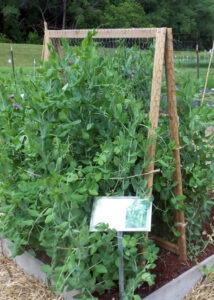
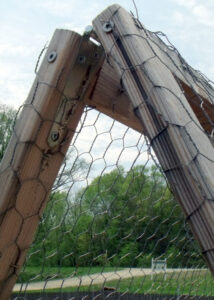
How to make a chicken wire A-frame trellis:
- Create two frames with long legs out of untreated cedar.
- Staple chicken wire onto the frame.
- Use hinges to attach two frames together at the top.
This construction allows flexibility of width in the garden and flat winter storage. This is a good trellis for peas, shorter pole beans, and vining flowers.
Bamboo and Twine
Best for beans and sturdy climbing vines
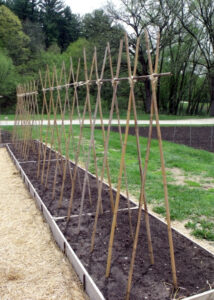
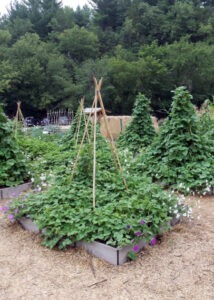
Bamboo stakes are incredibly useful around the garden, and trellis systems of all types can be made with a handful of stakes and twine.
How to build trellises with bamboo two ways:
- Teepee: Create a teepee by installing several stakes in a circle, then tying the tops together with twine (pictured above, right).
- Trellis wall: Make a long wall by creating two lines of poles about a foot apart, and tying the tops together (pictured above, left). Place a stake perpendicularly on top of the poles to add stability.
Bamboo trellis systems work well with pole beans, runner beans, and other strongly twining climbers. Bamboo is not recommended for cowpeas and peas, as they have a more difficult time attaching to the smooth surface of the poles.
T-Posts and Hog Panel
Best for short, vining plants and tomatoes

Trellises of T-posts attached to hog wire panels are a common sight on the Seed Savers Exchange farm because of their ease of installation and versatility.
How to build a T-post and hog panel trellis:
Drive two T-posts per panel into the ground, and attach hog wire panels to the posts with zip ties or twine. Both T-posts and hog wire panels are available at farm supply stores.
Vining plants will climb, and non-vining plants can be tied to the panel with twine for support.
T-Posts and Twine
Best for decorative cucumbers and small melons
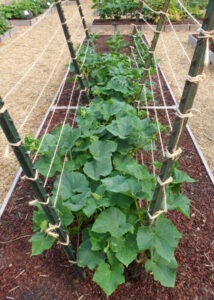
This experimental trellis system is used for displaying cucumbers and small melons.
How to build a display trellis for cucumbers and melons:
- Install several t-posts in two rows , with the T-posts leaning outwards to create a V-shape.
- Tie twine between each pair of T-posts to complete each line of the V.
- Place plants where the T-posts converge.
As cucumbers and other vining plants grow, the fruits will hang on the opposite side of the V in a decorative manner.
Twine
Best for vining plants and flowers
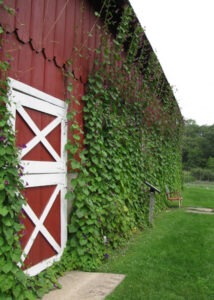
Twine can be used throughout the garden to provide support for vining plants. At Seed Savers Exchange, we string twine between wooden posts in the ground and hooks on the eaves of the barn to allow support for climbing morning glories.